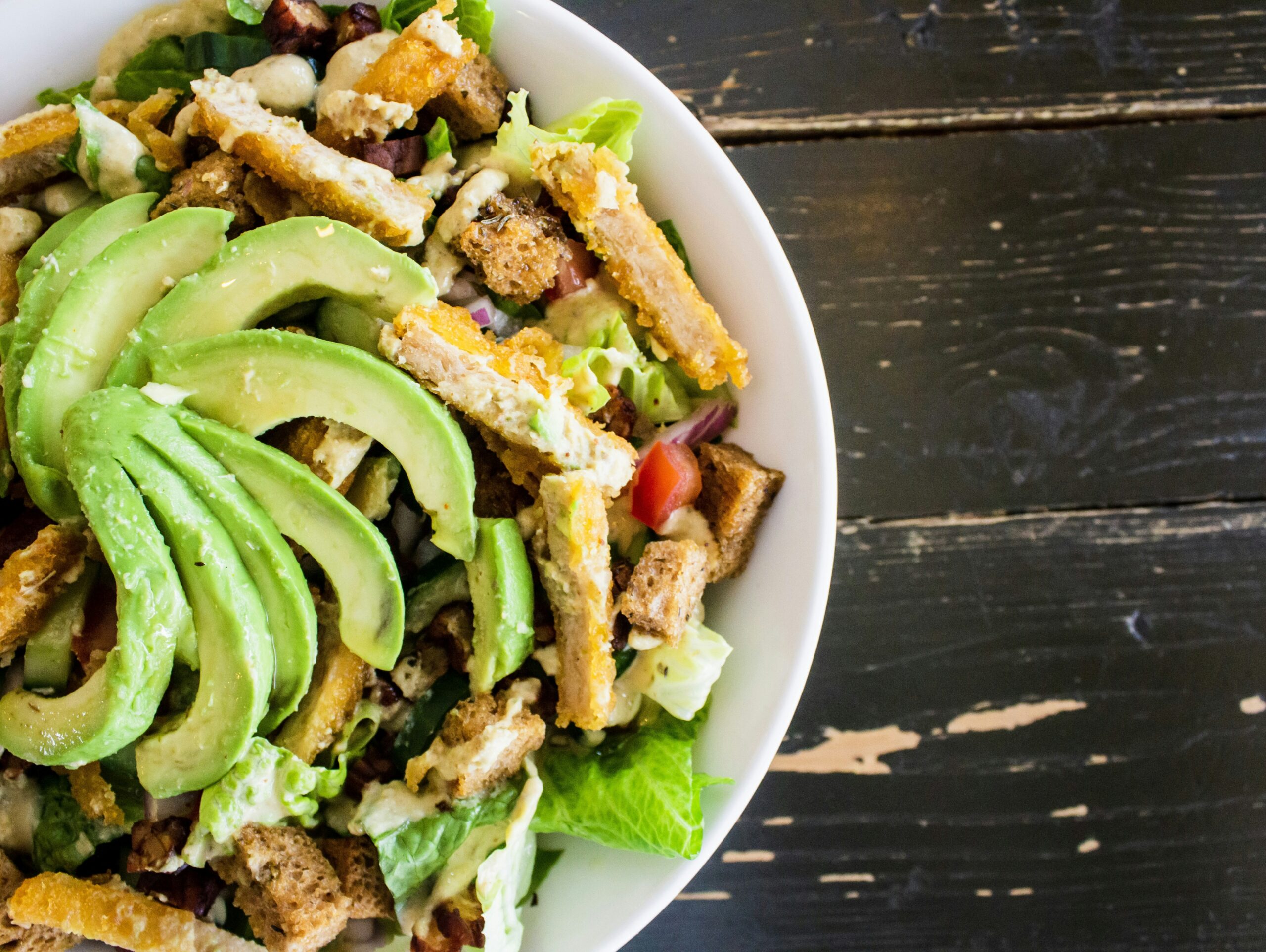In your journey towards weight loss, you may have come across the term “keto diet” quite often. But what exactly does this diet entail and how does it impact your exercise performance? The keto diet, short for ketogenic diet, is a low-carb, high-fat eating plan that has gained popularity for its ability to promote weight loss. However, questions have been raised about its effect on exercise performance. In this article, we will explore how a keto diet influences your workouts and whether it can truly hinder or enhance your progress towards your fitness goals. So, if you’ve been considering adopting a keto diet or are simply curious about its impact on exercise, keep reading to find out all you need to know.
Understanding the Keto Diet
The keto diet, short for ketogenic diet, is a low-carb, high-fat eating pattern that has gained popularity for its effectiveness in weight loss. The main principle of the keto diet is to induce a state of ketosis in the body, where it primarily burns fat for fuel instead of carbohydrates. By significantly reducing carbohydrate intake and increasing fat consumption, the body is forced to enter a metabolic state that promotes weight loss.
Principles of the Keto Diet
The keto diet revolves around drastically reducing carbohydrate intake and increasing fat consumption. This is achieved by consuming foods such as meat, fish, eggs, dairy products, nuts, seeds, and healthy oils while avoiding high-carb foods like grains, legumes, sugary foods, and starchy vegetables. By limiting carbohydrates, the body is deprived of its primary source of energy and begins to rely on stored fat for fuel, resulting in weight loss.

Food Types Included in a Keto Diet
The keto diet predominantly includes foods high in healthy fats, moderate protein, and very low carbohydrates. Healthy fat sources like avocados, coconut oil, olive oil, and fatty fish are staples of the diet. Protein can be obtained from sources such as meat, poultry, seafood, eggs, and dairy products. Low-carb vegetables like spinach, kale, broccoli, and cauliflower are also included to provide essential nutrients while keeping carbohydrate intake minimal.
Difference Between Keto Diet and Other Low Carb Diets
Although the keto diet is a form of low-carb diet, it differs from other low-carb diets in its specific macronutrient ratios. While other low-carb diets may allow for a moderate intake of carbohydrates, the keto diet restricts carbohydrate intake to a minimal level, typically around 20-50 grams per day. This strict limitation of carbohydrates is what triggers ketosis, making the keto diet unique in its approach to weight loss.

Ketosis and its Role in Weight Loss
Concept of Ketosis
Ketosis is a metabolic state where the body begins to break down stored fat for energy rather than relying on carbohydrates. When carbohydrate intake is significantly reduced, the liver starts producing ketones from fats, which are then utilized as an alternative energy source by the body and the brain. This shift to using ketones for fuel is known as ketosis and is a key aspect of the keto diet.
Role of Ketones in Metabolism and Energy Production
Ketones play a crucial role in metabolism during ketosis. They are a byproduct of the breakdown of fatty acids and are produced in the liver. Ketones are capable of crossing the blood-brain barrier and can provide a reliable and efficient source of energy for the brain. They also provide energy for other organs and muscle tissues, allowing the body to function optimally even with limited carbohydrate intake.
How Ketosis Facilitates Weight Loss
Ketosis promotes weight loss primarily through the burning of stored fat for fuel. When the body is in a state of ketosis, it becomes highly efficient at using fat as an energy source. This means that even stubborn fat stores can be tapped into and utilized, leading to a reduction in overall body weight. Additionally, the keto diet helps to control hunger and reduce appetite, leading to a decrease in calorie intake and further facilitating weight loss.
Exercises Recommended During a Keto Diet
High-Intensity versus Low-Intensity Exercises
When following a keto diet, both high-intensity and low-intensity exercises can be beneficial. High-intensity interval training (HIIT) is a popular choice as it allows for maximum calorie burn and can be performed in a shorter amount of time. HIIT involves short bursts of intense exercise followed by brief recovery periods. On the other hand, low-intensity exercises like walking, swimming, or cycling can still provide cardiovascular benefits and help with overall fitness.
Benefits of Resistance Training
Resistance training, also known as strength or weight training, is highly recommended during a keto diet. It helps to build and maintain muscle mass, which is important for overall strength, body composition, and metabolic rate. As the keto diet limits carbohydrate intake, which is the body’s preferred fuel source for intense exercise, maintaining muscle mass becomes crucial. Resistance training also aids in preventing muscle loss during weight loss and can enhance the effects of the keto diet on body composition.
Importance of Cardio Sessions
Cardiovascular exercise plays a valuable role in maintaining overall health and can be incorporated into a keto diet. Cardio sessions, such as running, cycling, or swimming, help to improve cardiovascular fitness, burn calories, and aid in weight loss. These exercises can be performed at a moderate intensity for a longer duration, ensuring that the body stays in an aerobic state and relies on fat as fuel, complementing the goals of the keto diet.

Nutrition and Hydration in the Keto Diet
Importance of Macronutrients
Proper nutrition is essential for the success of any diet, including the keto diet. While the macronutrient ratios differ on a keto diet, it is important to ensure an adequate intake of all essential nutrients. Monitoring protein intake is crucial to support muscle preservation, while consuming ample healthy fats ensures sufficient energy and satiety. Additionally, incorporating low-carb vegetables provides important vitamins, minerals, and fiber.
Dealing with Electrolyte Imbalance
On a keto diet, the body’s electrolyte balance can be affected due to the reduced intake of carbohydrates. This is because carbohydrates help retain water and electrolytes in the body. It is important to consume foods rich in electrolytes, such as sodium, potassium, and magnesium. This can be achieved by adding salt to meals, consuming foods like avocados and spinach, or even through supplementation if needed. Maintaining proper electrolyte balance helps prevent symptoms like fatigue, muscle cramps, and headaches.
Proper Hydration While on Keto
Staying properly hydrated is essential for overall health and exercise performance, regardless of the type of diet being followed. However, on a keto diet, the body has a reduced glycogen storage capacity, which means less water is retained in the body. This can lead to increased water loss and the need for increased fluid intake. It is important to drink enough water throughout the day to stay hydrated and support proper bodily functions, including exercise performance.
Keto Diet’s Effects on Exercise Endurance
Impact on Athletic Performance
When starting a keto diet, some individuals may experience a temporary decrease in exercise performance, especially in high-intensity activities that rely heavily on carbohydrates as a fuel source. It can take time for the body to adapt to using ketones efficiently. However, once fully adapted, many individuals report improved endurance during exercise, especially in activities that require prolonged, steady-state performance. The increased fat oxidation and stable energy levels provided by ketosis can support endurance activities.
Keto Adaptation Process for the Body
Keto adaptation is the process by which the body becomes efficient at utilizing ketones for fuel. Initially, when transitioning to a keto diet, the body is accustomed to relying on carbohydrates as its primary source of energy. As carbohydrate intake is reduced, the body starts to produce ketones from stored fat. This transition period can vary from individual to individual, but typically takes a few weeks for the body to fully adapt and optimize its ability to use ketones efficiently.
Comparison with High Carbohydrate Diet Effects
Compared to a high carbohydrate diet, the effects of the keto diet on exercise performance can differ. A high carbohydrate diet provides readily available energy in the form of glucose, which is beneficial for high-intensity exercise. However, the keto diet taps into the body’s fat stores and uses ketones for fuel, which can lead to enhanced endurance during longer-duration, steady-state activities. Both approaches have their respective advantages and are dependent on individual fitness goals and preferences.
Body Composition Changes with Keto Diet and Exercise
Fat Loss versus Muscle Loss
One of the key benefits of the keto diet, combined with exercise, is its ability to promote fat loss while preserving muscle mass. The low-carb, high-fat nature of the diet, along with resistance training, helps the body utilize stored fat for fuel while maintaining muscle through protein intake. By preserving muscle mass, the body’s overall composition can improve, leading to a leaner physique.
Keto-Induced Changes in Body Mass Index (BMI)
The keto diet, when combined with exercise, can have a positive impact on body mass index (BMI), which is a measure of body fat based on height and weight. As the keto diet promotes fat loss and muscle preservation, individuals may experience a reduction in overall body weight and an improvement in their BMI. This can be beneficial for overall health and indicate positive changes in body composition.
Keto’s Role in Muscle Preservation During Weight Loss
During weight loss, it is common to lose both fat and lean muscle mass. However, the keto diet, particularly when combined with resistance training, can help preserve muscle mass. Adequate protein intake on a keto diet supports muscle protein synthesis and prevents muscle breakdown. This is crucial not only for aesthetic reasons but also for metabolic health, as muscle is metabolically active and plays a role in maintaining a healthy metabolism.
Mitigating Keto Diet Side Effects During Exercise
Dealing with the Keto Flu
The keto flu refers to a set of symptoms that some individuals may experience when transitioning to a keto diet. These symptoms can include fatigue, headache, irritability, and muscle cramps. It is important to understand that the keto flu is temporary and typically subsides within a few days to a week. To mitigate these side effects during exercise, it is recommended to start the keto diet gradually, stay well-hydrated, replenish electrolytes, and listen to your body’s cues for rest and recovery.
Preventing Nutrient Deficiencies
As with any diet, it is essential to ensure adequate nutrient intake while on a keto diet, especially when engaging in regular exercise. Certain nutrients may be lacking due to restricted food choices, such as fiber from whole grains and certain vitamins from fruits and vegetables. It is important to include a variety of nutrient-dense foods and consider supplementation if necessary to prevent nutrient deficiencies and support overall health and exercise performance.
Managing Energy Levels During Workouts
Exercise performance can be influenced by energy levels, and some individuals may experience fluctuations in energy levels while on a keto diet. To manage energy levels during workouts, it is important to fuel properly before exercise. Consuming a balanced meal or snack that includes protein, healthy fats, and low-carb vegetables can provide sustained energy. Additionally, listening to your body and prioritizing rest and recovery can help maintain optimal energy levels during exercise.
Scientific Studies on Keto Diet and Exercise Performance
Pediatric Studies
Although most studies on the keto diet and exercise performance have focused on adults, there is emerging research on the effects of the keto diet in pediatric populations. Some studies have shown that a well-formulated keto diet can be safe and effective for children and adolescents, and may even enhance athletic performance in certain cases. However, further research is needed to fully understand the potential benefits and limitations in this population.
Research on Elite Athletes
Research on elite athletes and the keto diet is limited, primarily due to the potential challenges of maintaining high-intensity training while following a low-carb diet. However, a small number of case studies have shown promising results, with some athletes adapting well to a keto diet and even improving their performance in certain endurance events. It is important to note that individual responses to the keto diet can vary, and rigorous research in this area is still needed.
Case Studies on Typical Gym Goers
While most studies on the keto diet and exercise have focused on elite athletes or specific populations, there is limited research on the effects of the keto diet on typical gym goers. Case studies and anecdotal evidence suggest that some individuals may experience improved body composition, increased endurance, and better overall exercise performance while following a keto diet. However, more comprehensive studies are needed to verify these findings and understand the broader impact on exercise performance in the general population.
Keto Diet Long-term Impacts on Exercise Performance
Effects on Metabolism After Stopping Keto
One concern individuals may have when considering a keto diet is the long-term effects on metabolism, particularly after stopping the diet. Research suggests that once an individual resumes a more balanced, higher carbohydrate diet after a period of keto adaptation, their metabolism can adapt accordingly. This means that the body can switch back to efficiently utilizing carbohydrates for fuel, allowing for normal exercise performance without any long-lasting negative impacts.
Impact on Future Athletic Performance
While following a keto diet can have short-term impacts on exercise performance, there is limited evidence to suggest any long-term effects on future athletic performance. Once an individual has adapted to the keto diet, their athletic performance can be comparable to or even improved compared to a high carbohydrate diet for certain endurance activities. However, it is important to consider individual preferences, goals, and consult with a healthcare professional before making any significant dietary changes.
Role in Weight Maintenance Post Weight Loss
After achieving weight loss goals, weight maintenance becomes key for overall health and sustainability. The keto diet can play a role in weight maintenance, as it provides a satisfying and sustainable eating pattern for many individuals. By favoring a diet high in healthy fats and adequate protein, individuals may experience increased satiety and reduced cravings, making it easier to maintain a healthy weight. Additionally, the keto diet can help individuals maintain muscle mass, which is important for long-term weight management.
Personalizing Exercise Plan While on Keto Diet
Assessing Individual Caloric Needs
To effectively personalize an exercise plan while following a keto diet, it is important to assess individual caloric needs. Caloric needs can vary based on factors such as age, gender, weight, height, activity level, and overall goals. Calculating personalized caloric needs can help ensure appropriate fueling for exercise and promote optimal weight loss or maintenance while on a keto diet. Consulting with a registered dietitian or nutritionist can provide individualized guidance.
Incorporating Personal Food Preferences
Personal food preferences should always be taken into consideration when developing an exercise plan while following a keto diet. While the diet primarily focuses on low-carb, high-fat foods, there is still room to incorporate individual tastes and preferences. Choosing from a wide variety of proteins, healthy fats, and low-carb vegetables can provide flexibility and enjoyment while adhering to the principles of the keto diet. This can help promote long-term adherence to both the diet and exercise plan.
Adjusting Workout Routines According to Energy Levels
The keto diet can impact an individual’s energy levels, particularly during the initial adaptation phase. It is important to listen to your body and adjust workout routines accordingly. If energy levels are lower than usual, incorporating lower-intensity exercises or shorter-duration workouts may be more appropriate. As the body becomes more adapted to using ketones for fuel, energy levels may stabilize, allowing for a gradual increase in exercise intensity and duration. Flexibility and patience are key when adjusting workout routines while on a keto diet.
In conclusion, the keto diet can have significant impacts on exercise performance during weight loss. By understanding the principles of the keto diet, incorporating appropriate exercises, prioritizing nutrition and hydration, and personalizing the exercise plan, individuals can optimize their weight loss journey while maintaining energy levels and preserving muscle mass. It is important to consult with a healthcare professional or registered dietitian when embarking on any major dietary changes to ensure safety and effectiveness. With proper guidance and planning, the keto diet and exercise can work synergistically to achieve long-term weight loss success.

